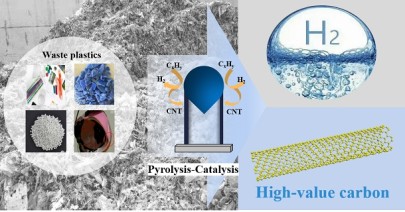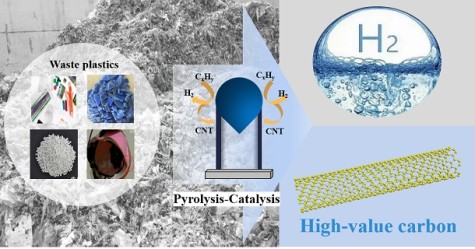The increasing consumption of plastics worldwide leads to a significant production of plastic waste. Each year, more than 330 million tons of waste plastics were produced worldwide, with 60 million tons produced in Europe. Coproduction of hydrogen and carbon nanotube composites (CNCs) via pyrolysis-catalysis of waste plastics has been proven to be one of the most promising thermochemical recycling approaches for the upcycling of waste plastics. Simultaneous production of hydrogen and CNCs from waste plastics offers commercial effective feedstocks, and also can be a sustainable way for the management of waste plastics. The most critical factor that influences the upcycling efficiency of waste plastics via pyrolysis-catalysis method is the proper catalyst. The state-of-the-art catalysts so far exhibit poor upcycling efficiency limited by the materials types, structures, and fabrication process. Our main idea and task will be the merging of material type and (micro)structure innovations to develop a class of advanced support-material-free catalysts, as the next generation catalysts for the pyrolysis-catalysis upcycling of waste plastics.
Turquoise H2 & Functional Carbon Materials from Waste Plastic
Turquoise H2 & Functional Carbon Materials from Waste Plastic


